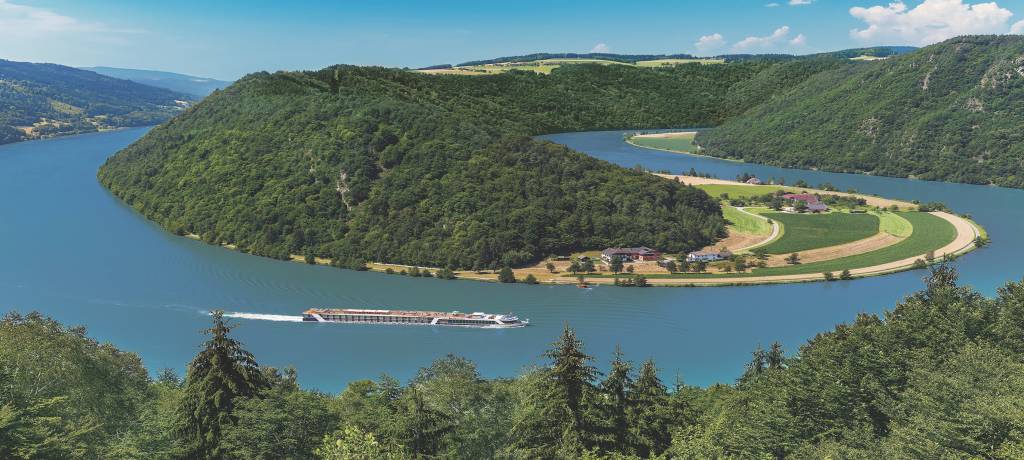Danube River

The Danube River, often referred to as Europe’s soul, flows gracefully through the continent, weaving together a rich tapestry of cultures, traditions, and histories. It is the second-longest river in Europe after the Volga River. It is located in the Central and Eastern areas of the European Union. For millennia, this iconic waterway has been more than just a source of sustenance and transportation; it has been a symbol of unity, connectivity, and cultural exchange. In this exploration, we delve into the myriad reasons why the Danube River holds such profound cultural significance, shaping the identities of the diverse communities that call its banks home.
I. The Cradle of Civilization: Danube’s Role in Human History
1. Ancient Settlements: Foundations of Culture
The Danube River basin has been inhabited since ancient times, serving as a fertile ground for the growth of civilizations. This section delves into the archaeological evidence of early settlements along the Danube’s banks and their contributions to the development of human culture.
2. Trade and Commerce: Catalysts of Cultural Exchange
As a vital artery of trade and commerce, the Danube facilitated the exchange of goods, ideas, and cultural practices among diverse communities. Explore the historical trade routes along the Danube and their impact on shaping the cultural landscape of Europe.
II. Art and Architecture: Danube’s Inspirational Muse
1. Iconic Landmarks: Testaments to Creativity
The cities and towns that line the Danube are adorned with architectural marvels and artistic treasures that reflect the creativity and ingenuity of generations past. This section highlights some of the iconic landmarks along the Danube, from majestic palaces to ornate cathedrals.
2. Danube School of Art: Renaissance on the River
During the Renaissance period, the Danube became a focal point for artistic expression, giving rise to the Danube School of Art. Discover the works of renowned artists who were inspired by the beauty of the river and its surrounding landscapes.
III. Music and Literature: Danube’s Melodic Muse
1. The Blue Danube: Inspiration for Musical Masterpieces
The Danube River has inspired countless composers and musicians, including Johann Strauss II, whose waltz “The Blue Danube” remains an enduring symbol of the river’s beauty and grace. Explore the musical heritage of the Danube and its influence on classical and folk music traditions.
2. Literary Legends: Danube in Literature
From the works of Goethe to the poetry of Petőfi, the Danube has captivated the imaginations of writers and poets throughout history. This section explores the literary legacy of the Danube, with tales of adventure, romance, and intrigue set against the backdrop of Europe’s legendary waterway.
IV. Culinary Delights: Danube’s Gastronomic Heritage
1. Danube Cuisine: Flavors of the River
The culinary traditions along the Danube reflect the region’s diverse cultural heritage, with each country contributing its own unique flavors and dishes. Sample the delights of Danube cuisine, from hearty goulash in Hungary to delicate pastries in Austria.
2. Wine Regions: Vineyards Along the Danube
The Danube River valley is home to some of Europe’s most renowned wine regions, where vineyards thrive in the fertile soil and temperate climate. Discover the rich viticultural heritage of the Danube, with wine tasting experiences that celebrate centuries of winemaking tradition.
V. Festivals and Celebrations: Danube’s Vibrant Spirit
1. Danube Carnival: A Spectacle of Culture
The Danube region comes alive with vibrant festivals and celebrations that showcase the cultural diversity and vitality of its communities. Experience the colorful pageantry of events like the Danube Carnival, where music, dance, and tradition merge in joyful revelry.
2. Folklore and Traditions: Preserving Cultural Heritage
Throughout the Danube basin, ancient folklore and traditions continue to be passed down from generation to generation, preserving the cultural heritage of the region. Join in the festivities of traditional festivals and rituals that honor the customs of the past.
Conclusion: A River of Cultural Continuity
As we conclude our exploration of why the Danube River holds such profound cultural importance, we are reminded that its significance extends far beyond its role as a mere waterway. The Danube is a living testament to the resilience, creativity, and diversity of the human spirit, shaping the identities and aspirations of the communities that thrive along its banks.
Know More about the Danube River.
What are The Religious Places of the Danube River?
When Did The Danube River Basin Become a Focus?
Where is The Danube River Located?
Who Were The Key Historical Figures and Civilizations of The Danube River?
How to Reach Danube River?




